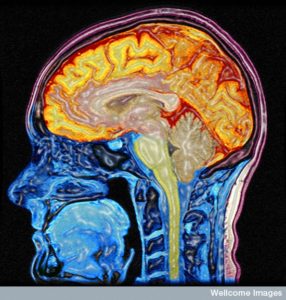Why did you write The Secret Language of Cells?
 While studying signaling among brain cells, I became aware that all our cells—immune cells, gut cells, microbes, plant cells, etc. —are also constantly sending back and forth messages to each other in the same ways that neurons do. These conversations among cells outside of the brain appeared to be very important, but it was difficult to find detailed, organized information about them that was understandable to the general science reader. The more research I did, the more it appeared that cellular communication is a very fundamental aspect of all life, although it was not the focus of any published books at the time.
While studying signaling among brain cells, I became aware that all our cells—immune cells, gut cells, microbes, plant cells, etc. —are also constantly sending back and forth messages to each other in the same ways that neurons do. These conversations among cells outside of the brain appeared to be very important, but it was difficult to find detailed, organized information about them that was understandable to the general science reader. The more research I did, the more it appeared that cellular communication is a very fundamental aspect of all life, although it was not the focus of any published books at the time.
How did your interests gradually change from neuroscience to cellular communication?
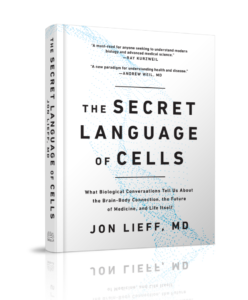 I am still very interested in neuroscience, but human brain research led me to the surprising intelligence in brains throughout the animal kingdom and eventually to intelligence in cells. I wrote blog posts on my website, Searching for the Mind, about the advanced capabilities of elephants, birds, and other animals. What really surprised me was how smart insects are, even though they have very tiny brains. I learned that bees use symbolic language, understand abstractions, and self-medicate in complex ways. I was shocked by how smart individual ants and termites are. But even more amazing is the discovery of intelligence in individual cells, including microbes. Everywhere I looked cells were talking to each other, just like brain cells, and these conversations determined biological activity throughout the body, not just in the brain.
I am still very interested in neuroscience, but human brain research led me to the surprising intelligence in brains throughout the animal kingdom and eventually to intelligence in cells. I wrote blog posts on my website, Searching for the Mind, about the advanced capabilities of elephants, birds, and other animals. What really surprised me was how smart insects are, even though they have very tiny brains. I learned that bees use symbolic language, understand abstractions, and self-medicate in complex ways. I was shocked by how smart individual ants and termites are. But even more amazing is the discovery of intelligence in individual cells, including microbes. Everywhere I looked cells were talking to each other, just like brain cells, and these conversations determined biological activity throughout the body, not just in the brain.
What does the book say about viruses and COVID 19?
Everyone is much more aware of viruses now because of COVID-19. People want to understand what viruses are and how they work. The latest information is quite shocking! As in other fields of biology and medicine, research advances about viruses are based on the new science of cellular communication. Recent findings show that viruses communicate among themselves with small molecular signals to make decisions and determine group behavior, just as cells do. In the book, I describe the current understanding of these varied signals and the very elaborate lifestyles of several important viruses, such as COVID-19, HIV, Ebola, and Herpes. The more we understand these signals, the more we will be able to deal with them.
viruses are and how they work. The latest information is quite shocking! As in other fields of biology and medicine, research advances about viruses are based on the new science of cellular communication. Recent findings show that viruses communicate among themselves with small molecular signals to make decisions and determine group behavior, just as cells do. In the book, I describe the current understanding of these varied signals and the very elaborate lifestyles of several important viruses, such as COVID-19, HIV, Ebola, and Herpes. The more we understand these signals, the more we will be able to deal with them.
Because of the ability of viruses to make decisions, as well as to evade and counter elaborate attacks by our much more complex cells, the entire definition of life must be updated. Currently, most scientists do not consider viruses to be alive with life being defined as the ability of cells to sustain themselves with metabolism, along with an ability to reproduce. One way to think of viruses being as alive as a cell is to focus on the phase where they take over a cell’s machinery—now called a virocell. They build a factory out of organelle membranes, place their enzymes in order, and direct the very complex cell to  reproduce thousands of virus copies, which are then released.
reproduce thousands of virus copies, which are then released.
My book also addresses the little-known fact that viruses are the most prevalent life form on earth and can be very helpful to humans. They play a critical role in the development of the human placenta, the production of important molecules such as digestive enzymes, and in the fight against other enemy microbes. We live surrounded by a sea of viruses that have by far the most genes, and the most varied genes, on the planet and these have been vital to evolution.
Does your book explain why microbes can be so important in human lives?
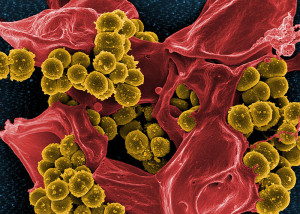
Yes. The reason is quite simple, but it hasn’t been clearly explained before. Even though bacteria are a thousand times smaller and less complex than human cells, they speak the same language as our cells. Because of this, microbes can influence human cells by intercepting or altering conversations among human cells that are important for health. My book also describes how fungus, plants, bacteria, viruses, and human cells all constantly influence each other.
Andrew Weil, M.D. has called the central idea of your book a “new paradigm for health and disease.” What is the new paradigm?
In the past, when considering health and disease, scientists would mostly study cells of a particular organ, nearby blood vessels, and perhaps nerves and hormones affecting it. The new paradigm is that complex conversations all over the body affect every organ and are the basis for understanding 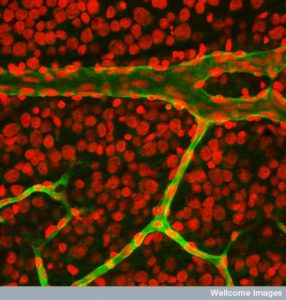 how our bodies work in health and in illness.
how our bodies work in health and in illness.
What is particularly new is the recognition that these important conversations among blood cells, the lining cells of other organs, immune cells, brain cells, and microbes occur remotely from the organ in question. Two examples discussed in the book are the skin and the gut where conversations among immune cells, neurons, lining cells, and microbes can influence all other organs throughout the body, including the brain. Discovering all of these important conversations that influence our health makes understanding physiology and discovering new treatments more complex. But at least we know where to look and what to look for now.
How important is this view for the future of medicine?
It’s very important! By focusing on the study of these communication signals, there have already been many surprising new findings about how physiology works. For example, no one suspected that platelets are actually first responders to infections and trauma and that they fight microbes locally while calling for help. No one suspected that capillary cells are the ones that instruct stem cells to produce particular cells for all organs including the brain.
while calling for help. No one suspected that capillary cells are the ones that instruct stem cells to produce particular cells for all organs including the brain.
By understanding these signals, totally new categories of treatment based on cellular communications can be found. For example, the reason that signals from microbes and T cells can be used as new treatments against cancers is the fact that microbes, T cells, and cancers use the same types of signals and have natural conversations with each other. New advanced cancer treatments intercept these natural pre-existing signals, alter them, or in some cases, invent new ones. In the future, we can expect an increasing number of completely novel ways to cure diseases, as new types of cellular conversations throughout the body are discovered.
How does this change our view of cancer?
The new science of cellular conversations has revolutionized our view of cancer. It shows that cancers are actually intelligent colonies, whose individual cells communicate with each other to work as a cohesive group just as microbe communities do. They converse about defense against immune cells, microbes, and anti-cancer medications and send molecules or even altered mitochondria to each other to help. It is the same as bacteria sharing genes that help the colony fight against antibiotics.
 Cancer conversations subvert many other types of cells to help the cancer grow and prosper. They manipulate immune signals to gain an advantage. They signal to ask neighbor cells that are not part of the cancer to help them, such as by making special blood vessels that immune cells cannot use for attacking the cancer. Through signaling, cancers cells are able to induce microbes to help them. Cancers intercept the signals of a tissue’s connective cells to manipulate them to protect the growing cancer community rather than the body. The fact that cancers understand the particular conversations of selected distant tissues allows them to produce metastatic colonies in these new sites. Finding their signals inside tiny sacks in the blood has become a vital diagnostic tool.
Cancer conversations subvert many other types of cells to help the cancer grow and prosper. They manipulate immune signals to gain an advantage. They signal to ask neighbor cells that are not part of the cancer to help them, such as by making special blood vessels that immune cells cannot use for attacking the cancer. Through signaling, cancers cells are able to induce microbes to help them. Cancers intercept the signals of a tissue’s connective cells to manipulate them to protect the growing cancer community rather than the body. The fact that cancers understand the particular conversations of selected distant tissues allows them to produce metastatic colonies in these new sites. Finding their signals inside tiny sacks in the blood has become a vital diagnostic tool.
Going forward, understanding cancers’ conversations will lead to new and totally different types of treatments.
What does your book say about the brain body connection?
It shows clearly that there is really no separation at all. There is a wired and a wireless brain— a fixed wired circuit of brain cells and a wireless brain consisting of cells sending signals to each other throughout the body, such as travelling immune cells in tissues and blood vessels. In fact, the whole body is really one enormous brain circuit with constant conversations among all cells. Wireless signaling from travelling immune cells to neurons can have great influence, even allowing immune cells to stop the brain’s functions by producing the “sick feeling.”
What about the mind body connection?
The Secret Language of Cells provides a new understanding of the relationship between mind and  body. Just as the definition of brain must be expanded from the wired set of neuronal circuits to include the vast wireless system consisting of traveling immune cells, as well as many other types of cells, the notion of what mind is must also be expanded based on this recent research.
body. Just as the definition of brain must be expanded from the wired set of neuronal circuits to include the vast wireless system consisting of traveling immune cells, as well as many other types of cells, the notion of what mind is must also be expanded based on this recent research.
If the mind is considered to be either determined by the brain, or related to activity of the brain, then the definition of mind must be enlarged to include the constant communication of all cells throughout the body not just in the central nervous system. This ubiquitous signaling among all cells in the body and the brain, using large communication circuits, is a strong indication that there really only one interactive system encompassing both.
What does your book say about immunity?
 The new understanding of the relationship of the mind and body is best exemplified by the latest research into the vital two way interactions of the immune system and the brain.
The new understanding of the relationship of the mind and body is best exemplified by the latest research into the vital two way interactions of the immune system and the brain.
The immune system has a huge impact on the brain and mental health. Similarly, the brain strongly influences immune activity throughout the body. These interactions profoundly affect general cognition and memory and are highly related to depression, anxiety, pain, and the responses to stress, as well as inflammation and other immune and brain diseases.
Immune cells are constantly talking with brain cells about infections, but also about emotional and social experiences.
 There are many new important examples of the impact of two-way communication between the immune system and the brain. T cell signals can stimulate more new memory neurons in the hippocampus memory center during acute stress, which can actually enhance learning and memory. But, during chronic stress and depression these T cell signals decrease new neurons and decrease memory. Another important signal from the immune system to the brain occurs when we are ill with T cells sending signals to the brain that cause the “sick feeling” so that we slow down and rest. Also, in the other direction, neuronal signals throughout the body work in tandem with immune cells during the responses to infections, cancer, and trauma to produce varied inflammatory and regenerative responses
There are many new important examples of the impact of two-way communication between the immune system and the brain. T cell signals can stimulate more new memory neurons in the hippocampus memory center during acute stress, which can actually enhance learning and memory. But, during chronic stress and depression these T cell signals decrease new neurons and decrease memory. Another important signal from the immune system to the brain occurs when we are ill with T cells sending signals to the brain that cause the “sick feeling” so that we slow down and rest. Also, in the other direction, neuronal signals throughout the body work in tandem with immune cells during the responses to infections, cancer, and trauma to produce varied inflammatory and regenerative responses
The constant cellular conversations described in the book are the bridge to understand how microbiology, immunology, psychiatry, and neurology all fit together.
What does your book say about pain?
Chronic pain has been difficult to understand. Now, through the study of cellular conversations, totally new types of circuits are being found that include multiple types of cells all at once, not just neurons and other brain cells. These newly discovered conversations include all brain cells, all i mmune cells, blood vessel cells, organ lining cells, and even microbes. Deciphering these elaborate pain-related conversations will lead to totally new types of treatments for a multitude of pain syndromes.
mmune cells, blood vessel cells, organ lining cells, and even microbes. Deciphering these elaborate pain-related conversations will lead to totally new types of treatments for a multitude of pain syndromes.
In fact, the probable mechanism of acupuncture has recently been found in these conversations. For example, when stimulating an acupuncture point a T cell is triggered to send a signal into the tissue that travels to be picked up by a neuron. The neuron then in turn sends signals up into the brain and has an influence on an organ that is in a completely different part of the body.
In reviewing your book, Ray Kurzweil has said that “cellular conversations might be related to the emergence of intelligence and consciousness.” What does your book imply about the definition of Life?
Life has been generally considered to be a cell or group of cells, with metabolic functions and the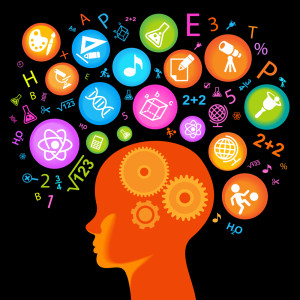 ability to reproduce. It has not been at all clear how to define consciousness or intelligence.
ability to reproduce. It has not been at all clear how to define consciousness or intelligence.
But, now we find that much of a cell’s function is to converse with other cells or internally signal among its own components. This back and forth directed communication now has to be included in a new definition of life and perhaps might be related to intelligence throughout evolution.
Everywhere we look, there are ubiquitous conversations among all cells in all organisms. Life might come down to the ability to converse, which is another way of saying life is based on the ability to transfer meaningful biological information.
Buy The Secret Language of Cells Here

“… a must read for anyone seeking to understand modern biology and advanced medical science.”
Ray Kurzweil, inventor, author, and futurist
“The Secret Language of Cells … presents a new paradigm for understanding health and disease. It also suggests new possibilities for treatment and for promoting healing.”
Andrew Weil, MD, director of the Andrew Weil Center for Integrative Medicine, professor at University of Arizona College of Medicine, and author
“The Secret Language of Cells… will fascinate those interested in new frontiers of neuroscience.”
Publisher’s Weekly
